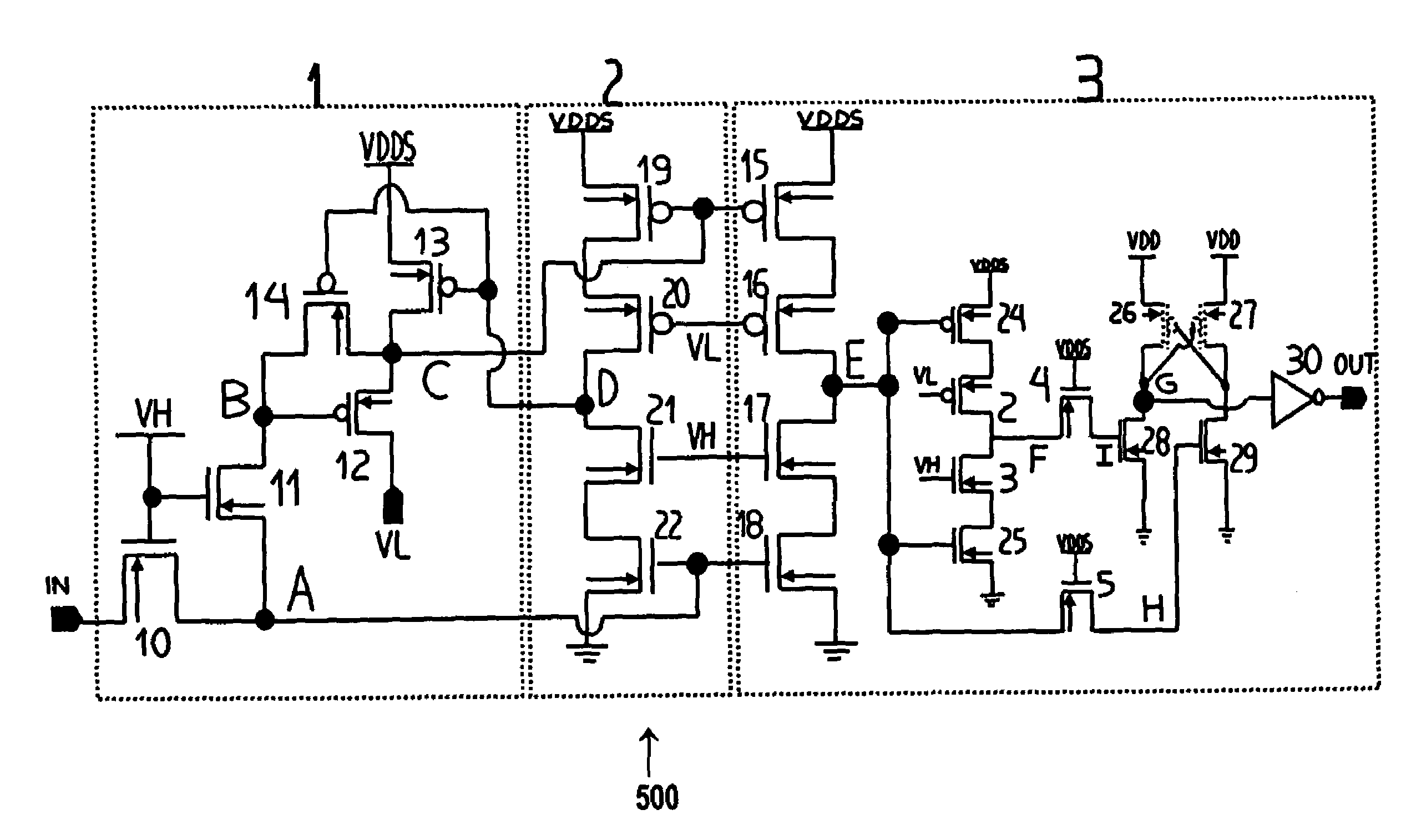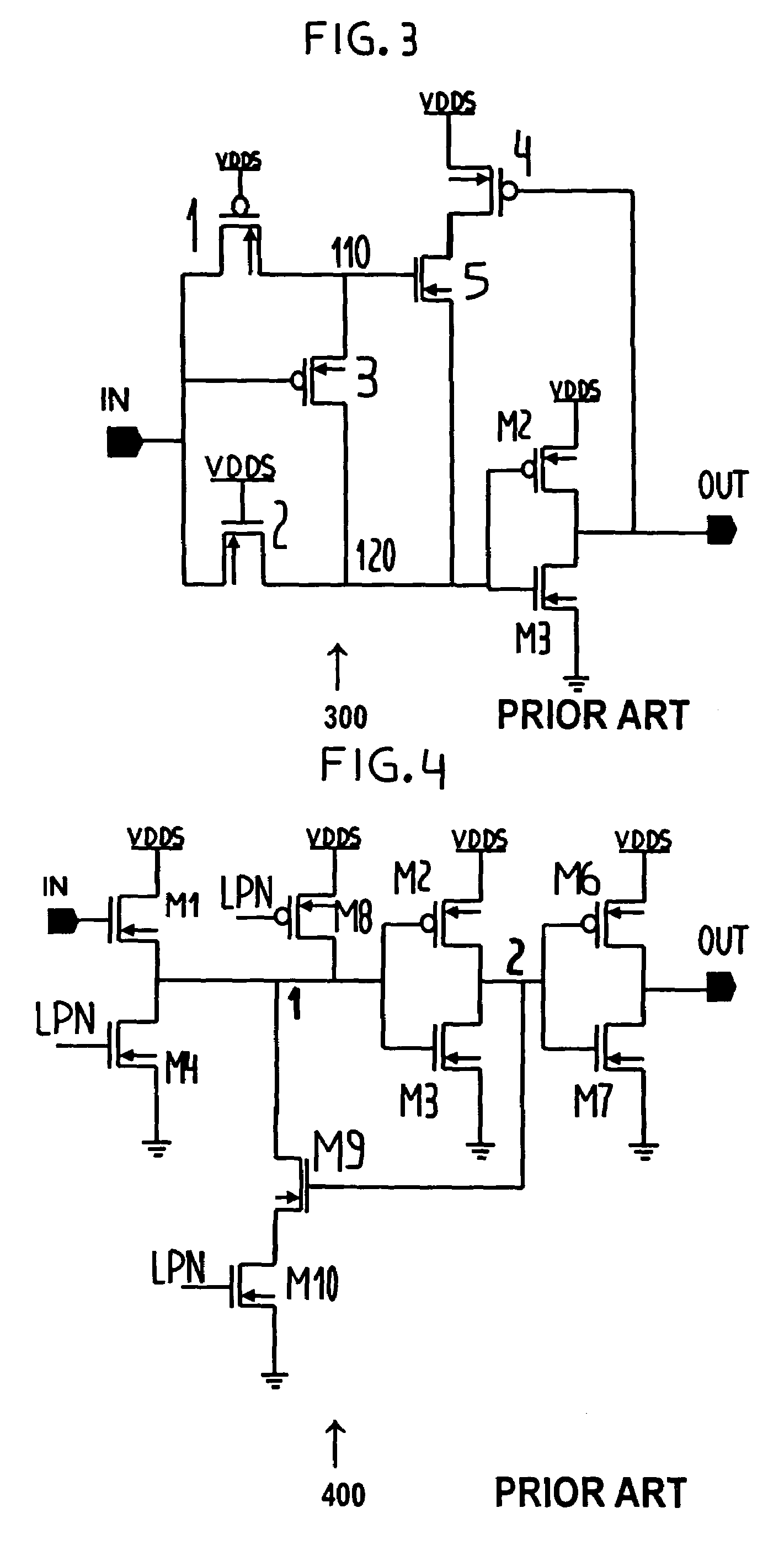High-voltage tolerant input buffer circuit
a buffer circuit and input technology, applied in logic circuit coupling/interface arrangement, pulse technique, instruments, etc., can solve the problems of sub-micron technology devices that cannot tolerate high-voltage, devices may experience temporary or even permanent damage, and circuit design for standard protocols has become more challenging, so as to speed up the transition and reduce power dissipation
- Summary
- Abstract
- Description
- Claims
- Application Information
AI Technical Summary
Benefits of technology
Problems solved by technology
Method used
Image
Examples
Embodiment Construction
[0027]Two reference signals—one to protect PMOS and the other to protect NMOS—are used to avoid gate-oxide stress and Vds stress for oxide degradation and hot carrier effect respectively. Reference signals are necessary to be incorporated in the high-voltage designs with very short channel devices. So a single reference block can be used for the whole IO ring in the chip. Reference signals are shared among different IOs in the ring. For the sake of clear understanding of the new circuit, reference block has not been described.
[0028]In one embodiment (FIG. 6), the input buffer circuit includes an n-channel field effect transistor and a feedback circuitry to provide a safe voltage range for the input inverter. This feedback circuitry structure includes series transistors and two-reference signal and is responsive to the voltage applied at the output node. It is also responsible for pulling-up the voltage at the gate of p-channel MOS transistor in the input inverter for low power consu...
PUM
 Login to View More
Login to View More Abstract
Description
Claims
Application Information
 Login to View More
Login to View More - R&D
- Intellectual Property
- Life Sciences
- Materials
- Tech Scout
- Unparalleled Data Quality
- Higher Quality Content
- 60% Fewer Hallucinations
Browse by: Latest US Patents, China's latest patents, Technical Efficacy Thesaurus, Application Domain, Technology Topic, Popular Technical Reports.
© 2025 PatSnap. All rights reserved.Legal|Privacy policy|Modern Slavery Act Transparency Statement|Sitemap|About US| Contact US: help@patsnap.com



